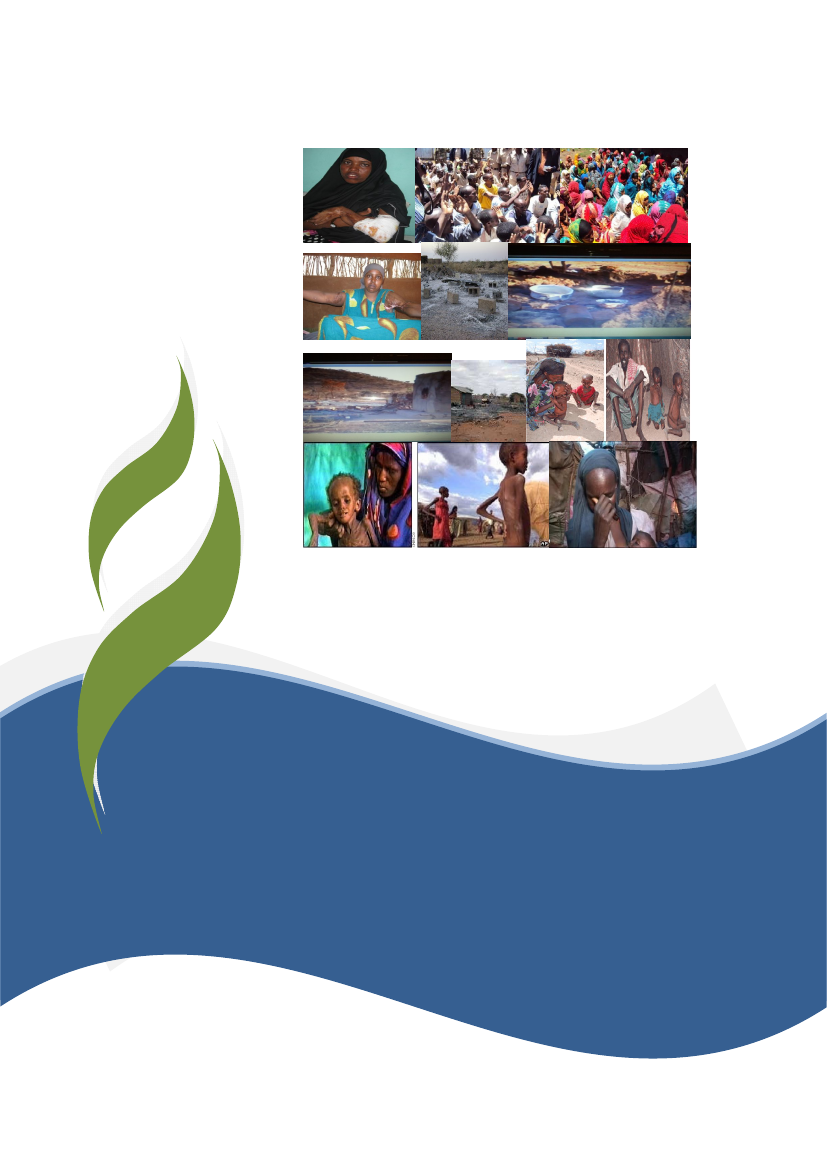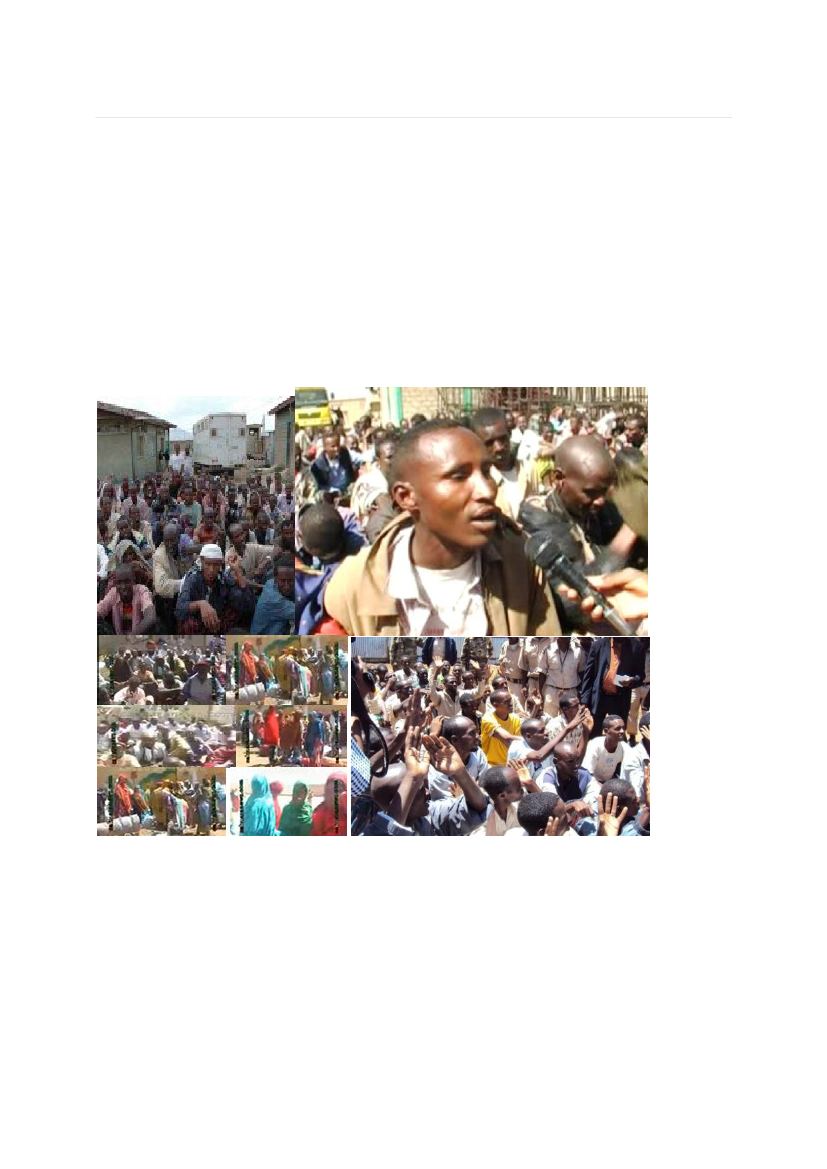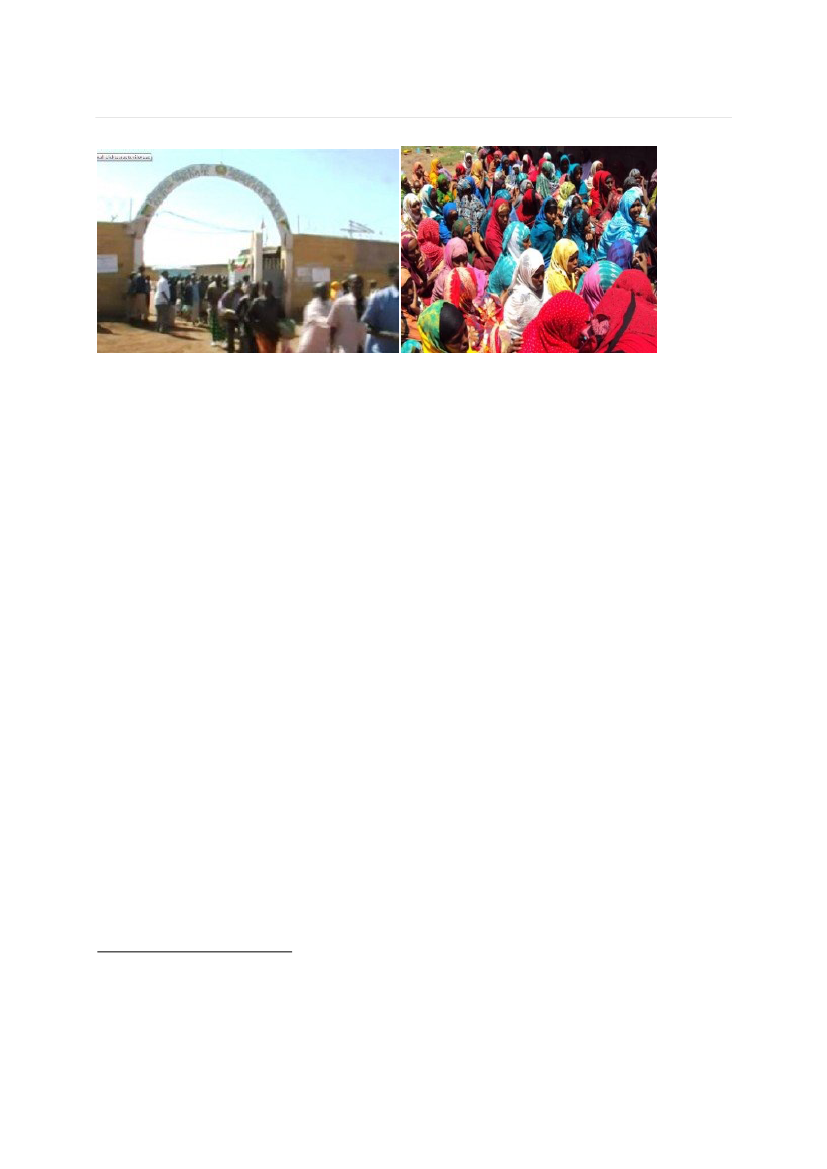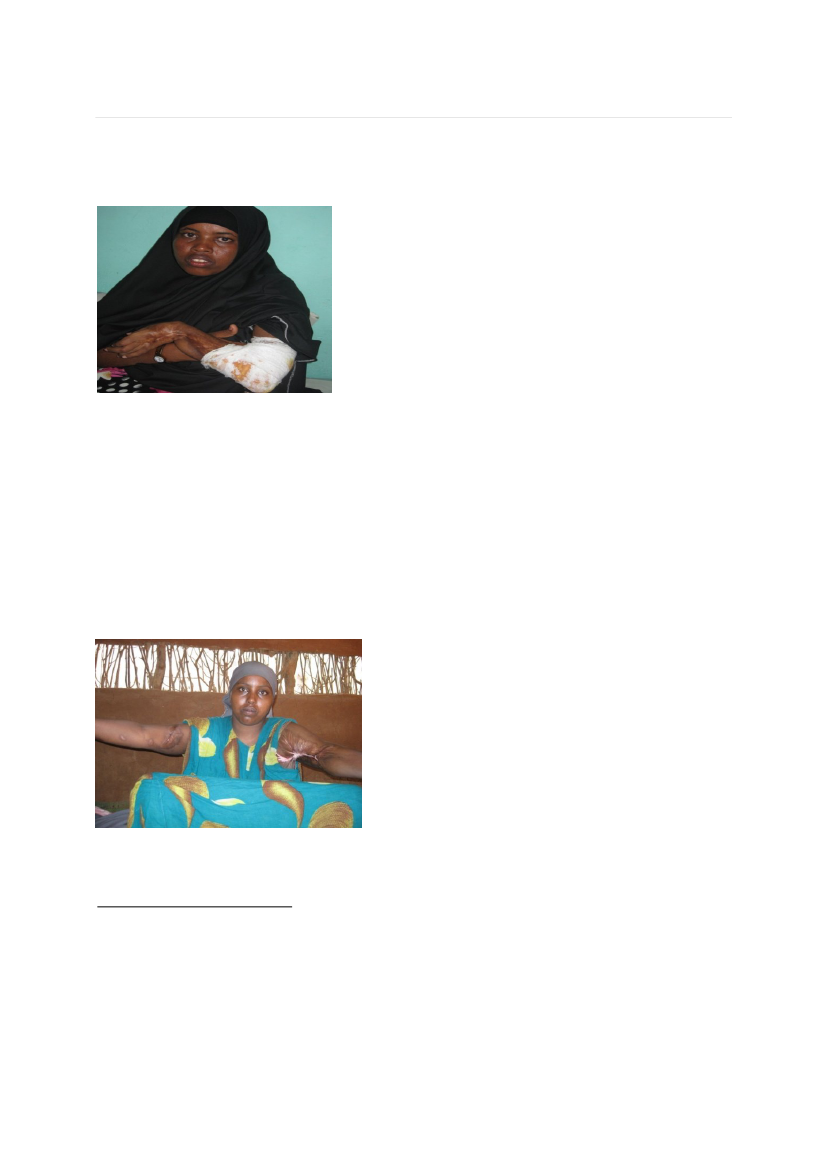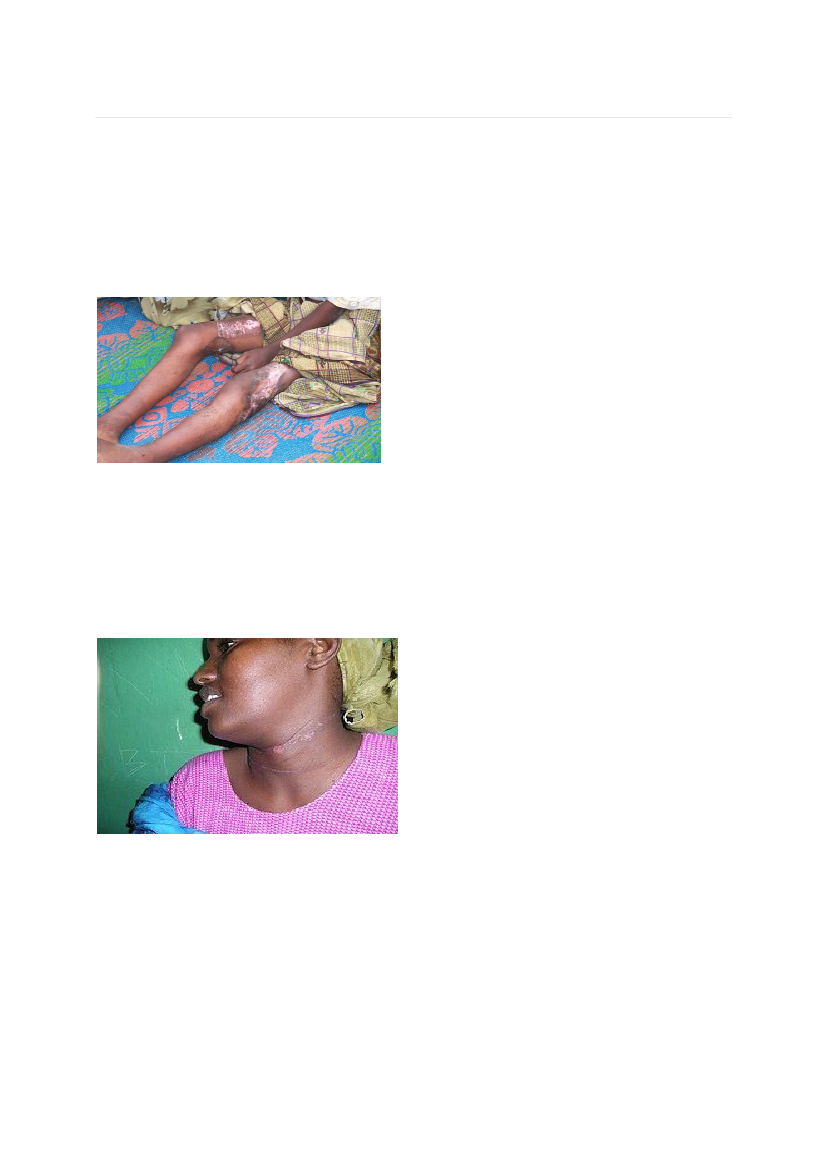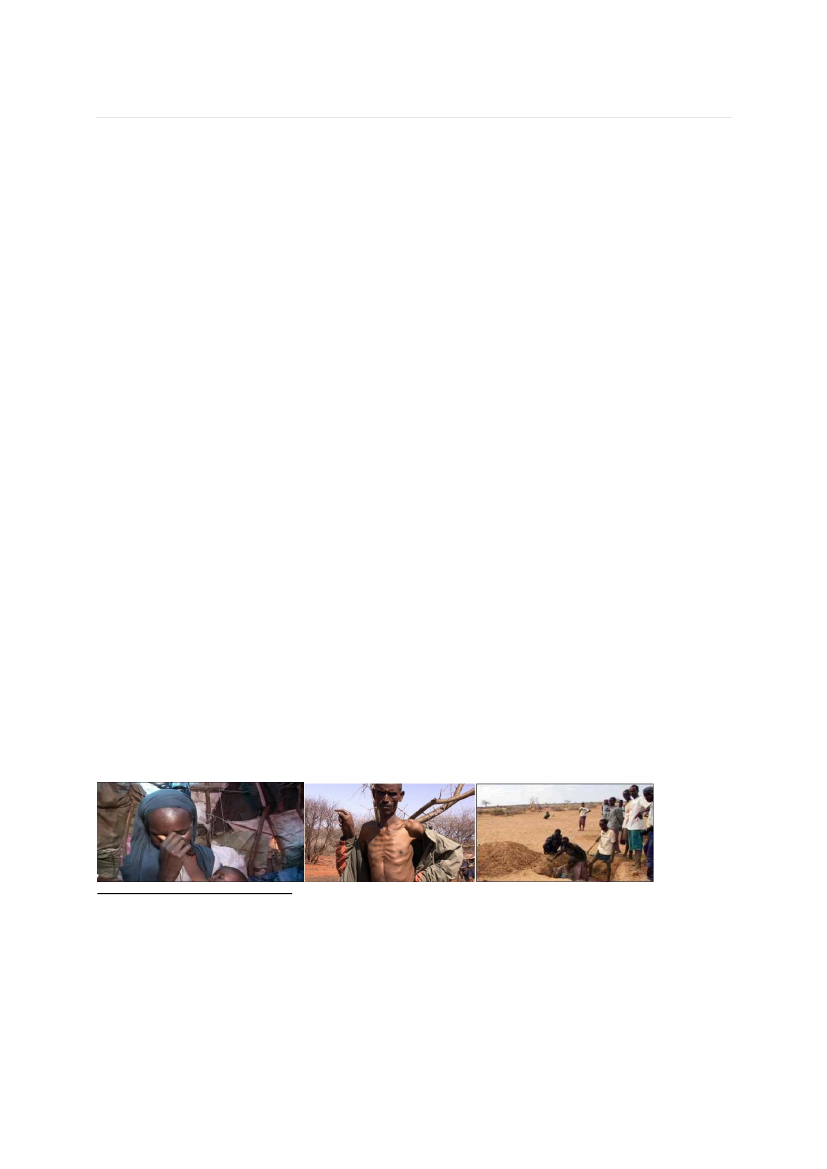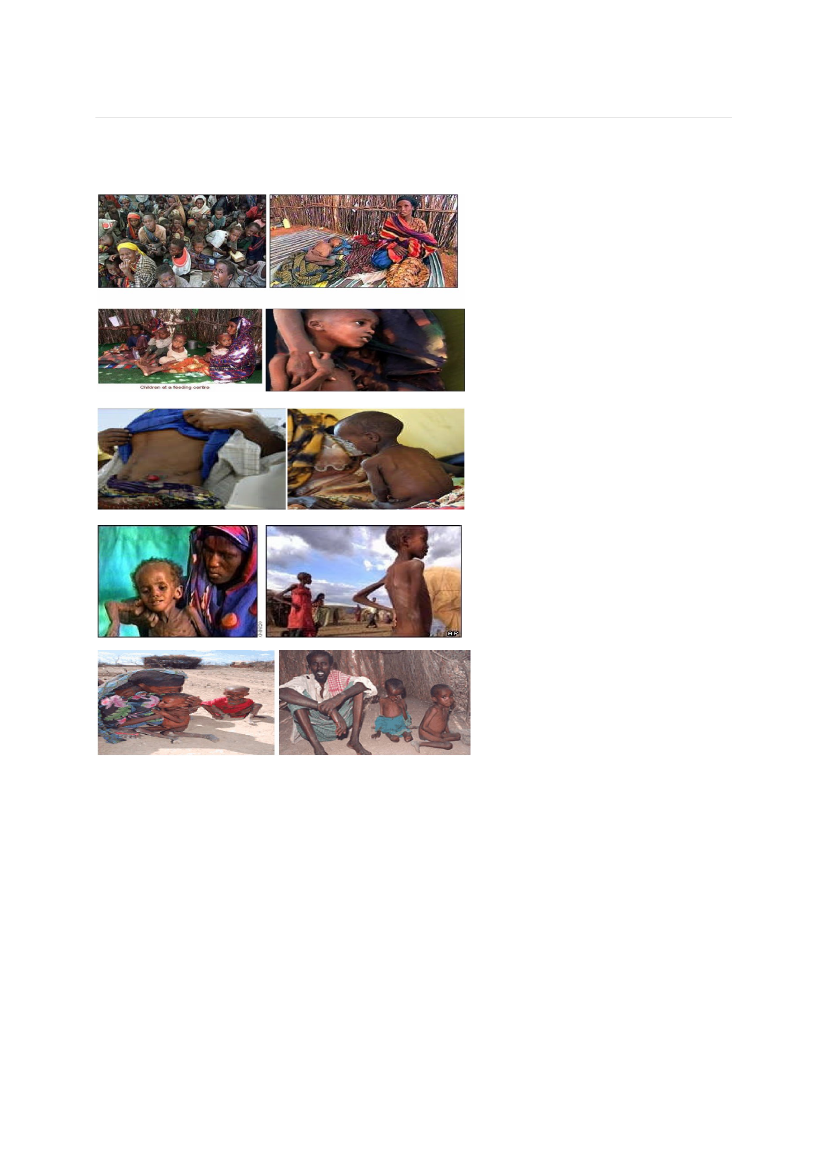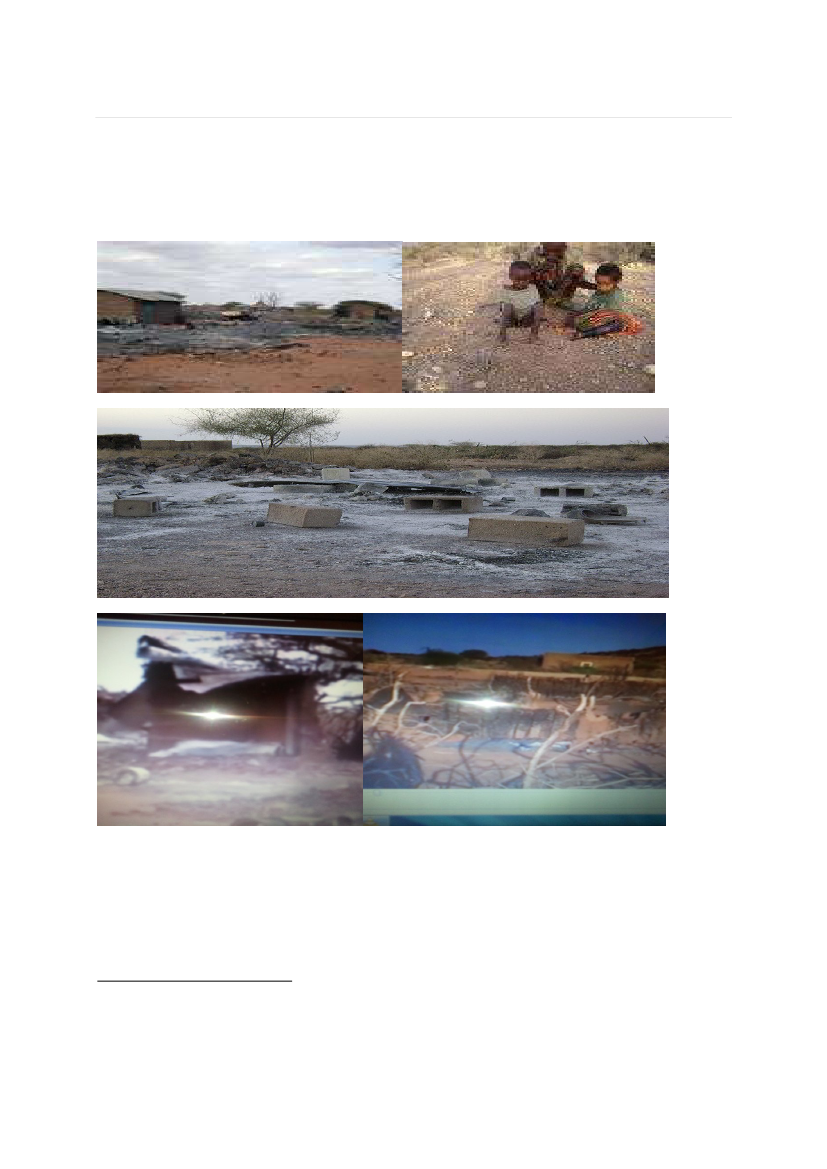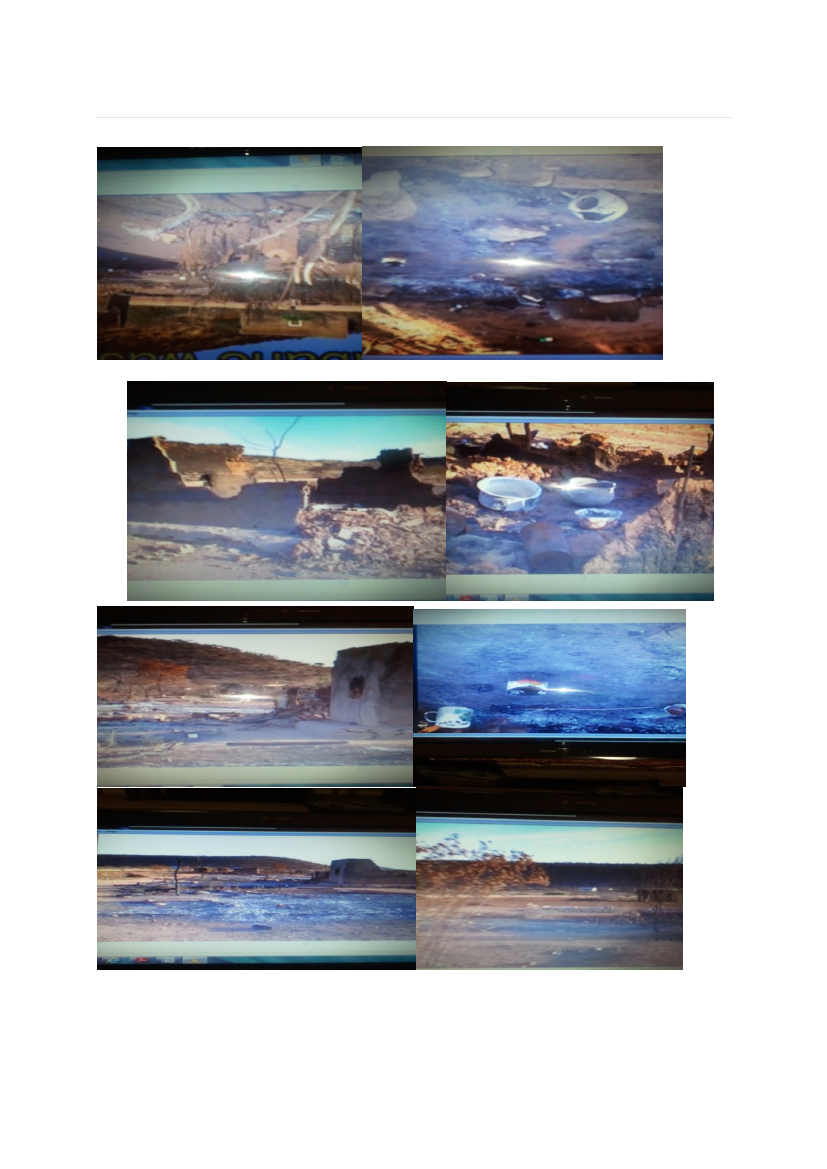Udenrigsudvalget 2010-11 (1. samling)
URU Alm.del Bilag 154
Offentligt
EVIDENCES OF GENOCIDE CRIME IN OGADEN & WORLD’S SILENCE!
The civilian population in Ogaden region is facing the worst famine crisistogether with military repression and total subjugation, extrajudicialkilling, rape, torture, disappearance, and mass detention from Ethiopiangovernment. Ethiopia also refuses to accept human rights Organizationsinspection into the Somali Ogaden Region and doesn't permit reportersthere.
P age|2
Table of Contents1.Mass Detention without due process is part of civilians’ daily life in Ogaden2. Torture and Rape against Ogaden Civilians Committed by Ethiopian Troops3. Ethiopia is Blocking Humanitarian Food-Aid and Commercial Activities in Ogaden4. Ashes of Villages Razed to the Ground by Ethiopian Troops in Ogaden
P age|3
EVIDENCES OF GENOCIDE CRIME IN OGADEN & WORLD’S SILENCE
IntroductionAddis Ababa regime’s brutal military attacks against Ogaden civilians had increased and yetcontinue since 2006 to current. This atrocity had resulted death of thousands of civilians, anddisplacement of thousands of women and children. In 2007, the Ethiopian troops began whatthe regime called “counterinsurgency operations”, risking commercial activities, burningvillages and making it complicated to deliver food aid to starving population. The situationthen turned to genocide, a genocidal crime against humanity that international communitygives no heed.The Ogaden people have been from time to time experiencing a partial suppression andmisguided policies of Ethiopian successive regimes. In Ogaden, past and current conditionstragedies could be prevented if there could be a caring government for the plight in region.For instance, people are under cycle of crisis, such as flooding of rivers, food and tradeblockade, and none early warning droughts that devastated all sorts of peoples' livelihoodmainly crops and livestock. Livestock is the only means of resilience for the needy pastoralistsociety. However, the commercial ban by the regime and droughts made worse the situation.In order to better grasp more about the Ogaden crisis often require a manifest understandingof its historical grounds and real nature. Therefore, the root causes for the Ogaden crises is aresult of European colonialists' "scramble for Africa" legacy. Such consequence is indeedwhat eventually aided an unwelcome Abyssinian invasion to seize Ogaden in late 19thcentury. By the support of European powers, Ethiopia’s attitude towards Ogaden people hasbeen based on military brutality, occupation, and politically motivated marginalizationthroughout history in the region. Thus, human rights violations in Ogaden have been adistinct phenomenon from late 19th century to this 21st time.Since Emperor Menelik era in 1890s and ever since the current regime led by Melez Senawicomes to power in 1991, nothing has changed for the long time bind and dehumanization inOgaden. In Ogaden, there are no significant schools, hospitals, roads, and any infrastructureat all. The Tegrian Liberation Front (TPLF) led regime employs incompetent criminals fromthe region. The regime’s aims and objectives are to push and mask its misdeeds out to deceivethe International aid donors and human rights organizations.Ethiopia has never been admitted committing human rights violations against the OgadenSomali people; however, satellite images taken from devastated villages and towns revealedcrime committed by Ethiopia's troops. In this case, some Towns and villages in Ogaden thatinhabitants established and thriving before had spotted by United States Commercial
P age|4
Satellite on razed and destroyed to the ground. We must be grateful to a moderntechnological innovation in the space science which disclosed a tort for its perpetrators triedto hide it.
Mass Detention without due process is part of civilians’ daily life in OgadenIn considering the human rights impact for the Ogaden civilians mass detention by the AddisAbaba regime is an act plainly violates international human rights law, principally in regardto the right to liberty under article 9 of the International Covenant on Civil and PoliticalRights (ICCPR.)
P age|5
These above photos are civilian mass detention in Ogaden. They commit no crime at all
Torture and Rape against Ogaden Civilians Committed by Ethiopian Troops
Rape in war includes both individual, albeit widespread, acts of sexual violence and thesystematic rape of women and children as an act of genocide, a strategy to terrorize andethnically cleanse a population.Violence against women and girls violates several principlesenshrined in international and regional human rights law, including the right to life, equality, andsecurity, equal protection under the law, and freedom from torture and other cruel, inhumane, ordegrading treatment.1
International legal norms prohibiting torture and other forms of ill-treatment havedeveloped, largely since 1945, as central components of the international law of humanrights, international humanitarian law, and international criminal law. The UniversalDeclaration on Human Rights (UDHR) of 1948 includes freedom from torture as one of thefundamental rights belonging to all human beings. Article 5 of the declaration provides that"No one shall be subjected to torture or to cruel, inhuman, or degrading treatment orpunishment." Subsequently, identical or similarly worded prohibitions were included inhuman rights treaties adopted at international and regional levels, and these set legalstandards for individual governments to follow. These include Article 7 of the InternationalCovenant on Civil and Political Rights (ICCPR) of 1966, Article 3 of the EuropeanConvention on Human Rights of 1950, Article 5 of the American Convention on HumanRights of 1969, and Article 5 of the African Charter on Human and Peoples' Rights of 1981.2The international norms in this array of treaties and customary international law impose arange of obligations on states. For instance, states must not only refrain from using torture,they must also take strong positive measures to prevent and punish torture. Article 2.1 of the
1
2
APA: Organizing for America | There Are A Thousand Hacking at the ... (n.d.). Retrieved fromhttp://my.barackobama.com/page/community/post/sashashaikh/gGxvVQ
Torture: Genocide and Crimes Against Humanity. (n.d.). Retrieved from http://www.enotes.com/genocide-encyclopedia/torture
P age|6
Torture Convention obliges states to "take effective legislative, administrative, judicial orother measures to prevent acts of torture in any territory under its jurisdiction."3
Torture of Ogaden women in Ethiopia by Meles Zenawi's troopsKowsar Yusuf Gud’Ade (Age 23) — Kowsar was arbitrarily detainedby security forces of Ethiopia’s tyrant Meles Zenawi.
While in detention, she was severely beaten and tortured. The soldiers used different methodsof torture including electrocution. Kowsar’s left arm was broken during one of the manybeating sessions.Kowsar begged for mercy and asked for medical attention, but the army denied her anytreatment.She was eventually released. No explanation was given for the arrest or thesubsequent release. Kowsar sought treatment for her injuries.As shown in the picture, the injury was severe and the damage could not be reversed as thetreatment facilities in the Ogaden are not equipped to deal with such severe injuries. She fledthe region shortly after her release.
Torture of Ogaden women in Ethiopia by Meles Zenawi's troopsFarhia Mohamed Mahad (Age 20) — Civilians are arrested andjailed in Ogaden on mere suspicions of being part of the OgadenNational Liberation Front (ONLF) and Farhia was no exception.
3
Convention against Torture and Other Cruel, Inhuman or Degrading Treatment or Punishment.GA res. 39/46,Annex, December 10, 1984.
P age|7
Farhia was only a child when she was arbitrarily detained and jailed at Garbo Jail in theOgaden. No explanation was given for her arrest. Farhia remained in jail for five years.During her imprisonment, Farhia was subjected to torture, rape, and electrocution. Herbody, especially her chest and breast, suffered severe burns as a result direct electric current.Farhia has permanent scar tissues all over her body. Farhia received no treatment for herinjuries.
Torture of Ogaden civilians in Ethiopia by Meles Zenawi'stroops: Person in this photo is Ismail Abdirahman (Age 8) —Ismail came to the refugee camp with his grandmother HawaHassan.
They fled from Gunagado, Dagahbur. According to Mrs. Hawa, the military came to hervillage, caught many villagers by surprise, and ordered everybody to come out of theirhouses. The soldiers started targeting and burning certain houses including Hassan’s house.Ismail and his uncle Mahamud were in the house when the soldiers set the house ablaze.Mohamud was severely burned as he shielded Ismail from the flames. As a result, Ismailsuffered burns on his thighs and knees and Mohamud died from severe burns and fumes.
Ridwan Hassan Zahid. A scar of strangulation on her neck did by EthiopianSoldiers are well visible.
The conflict has been visible enough for Ridwan Hassan Zahid who miraculously survivedher would-be executioners. Left for dead, she was found the next day by Somalis from anearby village that came to bury the corpses. The other nine were not so lucky. Some hadbeen hung from trees, others hung over holes in the ground like Zahid. Some of the men hadbeen stripped naked and their tongues had been cut out. Zahid hid in the countryside forthree days, but eventually she was told the army had learned she was still alive and was
P age|8
searching for her. Then began a two-week odyssey on foot, camel, and finally by truck tosafety in a neighboring country, which she asked NEWSWEEK not to disclose.4
Ardo Shugri Ahmed: pregnant and mother of five children was detained and tortured by Ethiopian Soldiers inSagag, Nogob region in Ogaden on July 3 until 14th, 2009.
The soldier shoved her along beating her with a thick stick. She was asked to sit in front ofthe makeshift office of the commander. She stayed there until the evening without food orwater. The guards even refused her to sit in the shade. Later in the evening, the soldiers tookher to the local school, which they was used as prison during the night. In the daytime, theprisoners were kept at the camp languishing at the sun, being watched by the guards, and thewhole community passing by. At night, the soldier torturers would force them her and 30other prisoners, mostly women but with few men also, to strip and then march them to aplace behind the camp. She would be beaten with wires, while naked. At one time the soldierasked the other male detainee to dig a shallow grave and put her inside asked her to say herprayers before the decapitated her. She fainted and later found herself in the school prison.She was disoriented for a while and though she was dead. The torturers included members ofthe local militia who took part in the beating and acted as translators. She added that to theshaming of the victims as they were from the local area and standing in front of them nakedwas the very humiliating Ardo said.
Ethiopia is Blocking Humanitarian Food-Aid and Commercial Activities inOgadenThe Ethiopian military and its proxy militias have also been siphoning off millions of dollars ininternational food aid and using a UN Officials, former Ethiopian polio eradication program tofunnel money to their fighters, according to relief officials, government administrators and amember of the Ethiopian Parliament who defected to Germany last month to protest thegovernment's actions. The blockade takes aim at the heart of the Ogaden region, a vast deserton the Somali border where the government is struggling against a growing rebellion and whereEthiopia’s Dirty War ByJasonMcLure, Newsweek Web ExclusiveJan 22, 2008.4
P age|9
government soldiers have been accused by human rights groups of widespread brutality.Humanitarian the rebels and dry up their officials say the ban on aid convoys and commercialtraffic, intended to squeeze bases of support, has sent food prices skyrocketing and disrupted traderoutes, preventing the nomads who live there from selling their livestock. Hundreds of thousands ofpeople are now sealed off in a desiccated, unforgiving landscape that is difficult to survive in evenin the best of times."Food cannot get in,"5The Ethiopian troops had committed widespread atrocities, using tactics aimed at not only todefeat the rebel group, but to collectively punish communities suspected of helping therebels. “The Ethiopian government is blockading emergency food aid and choking off trade tolarge parts of a remote region in the eastern part of the country that is home to a rebel force,putting hundreds of thousands.”6"In one particularly awful account, a man describes how Ethiopian soldiers would putropes around the necks of men and pull from each side, strangling them," she said. "They alsoforcibly relocated many of the civilians in rural areas into larger towns and confined peoplein military barracks, where they were tortured and beaten on a daily basis. There was alsowidespread rape of women and other sexual violence carried out by Ethiopian soldiers.""This brutal campaign of war crimes and crimes against humanity has contributed to alooming humanitarian crisis in the region that threatens the lives of thousands of Somalis inthe area. And of course, this campaign is being carried out with complete impunity," shecontinued.The Human Rights Watch report includes satellite imagery that the group saysconfirms accounts of Ethiopian troops destroying villages. Gagnon says Ethiopia is alsowaging an economic war against Ogaden's ethnic-Somali population, imposing ablockade on trade, confiscating livestock, and denying them access to humanitarianassistance.”7
5
Ethiopia thwarting food aid byMohammed Diab, the director of the UN World Food Program in Ethiopia, 2008.Rebelregion in east,from the NY Times, byJeffrey Gettleman, July 22, 2007
6
7
Human Rights Report Says Ethiopia Committing War Crimes in Ogaden By Alisha Ryu Nairobi12 June 2008.
P a g e|10Victim of starvation and food blockadeBurying victims of military brutality in daily basis
Victim of military torture
Victims of starvation and food blockade
Victims of starvation and food blockade Internally displaced and starving families
Displaced and starving families in Ogaden by Ethiopian Troops
Ashes of Villages Razed to the Ground by Ethiopian Troops in OgadenEthiopian troops have burnt 40 villages in the Ogaden region since 2006-2010, causingcivilian deaths and leaving many families homeless. Tension in the affected districts remainshigh and local residents are enraged at the Ethiopian troop’s ‘inhumanity’. "The Ethiopianarmy's answer to the rebels has been to brutally attack civilians in the Ogaden," saidGeorgette Gagnon, Africa director at Human Rights Watch. "These widespread andsystematic atrocities amount to crimes against humanity. Yet, Ethiopia’s major donors,
P a g e|11
Washington, London and Brussels, seem to be maintaining a conspiracy of silence around thecrimes."8
Torched Village of Ado
Children were their home while setting on fire by Ethiopia’s Army
Ashes of Lebigah village burned in February, 2008 by Ethiopian Troops
8
Ethiopia: Army Commits Executions, Torture, and Rape in OgadenHuman Rights Report, June 12, 2008
P a g e|12
Qamuuda Village was burned to the ground by Ethiopian Troops on July 20,
2007.
The above scenes are destroyed and burned to the ground Village of Sasamane in Ogaden. Sasamane wasdemolished and razed to the ground by Ethiopian military on September 12, 2007.
P a g e|13
In the face of decades of such unrelenting oppression, Ogaden people are calling upon peopleof conscience throughout the world to take a stand against human suffering and crimesagainst humanity in Ogaden.
